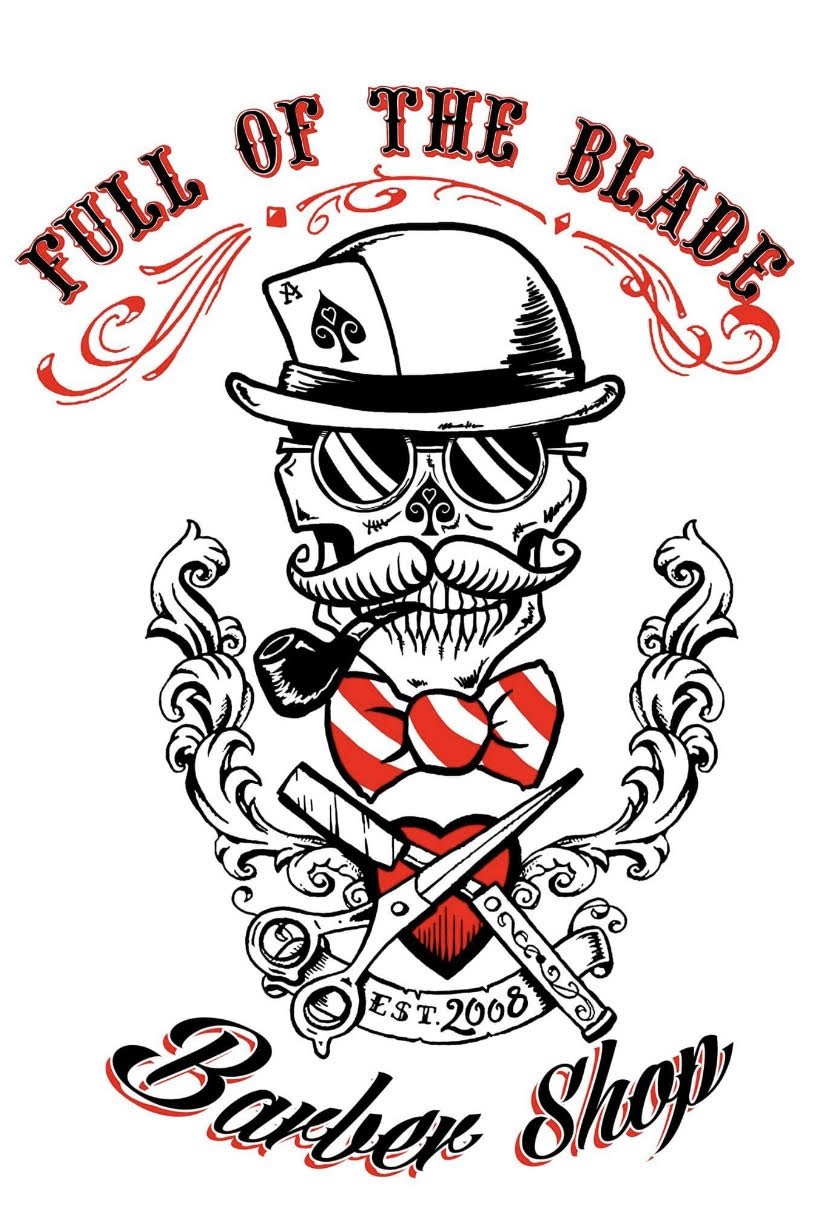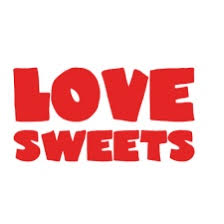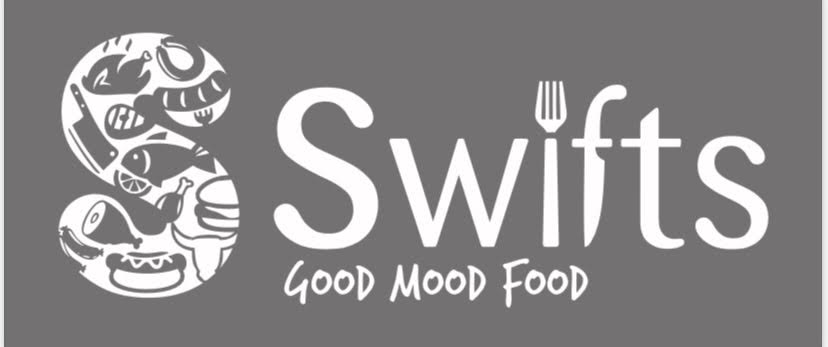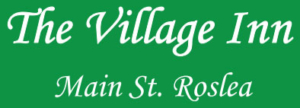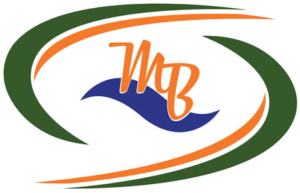In the early 1880’s Cusack turned his attentions to indigenous Irish sports. In 1882 he attended the first meeting of the Dublin Hurling Club, formed ‘for the purpose of taking steps to re-establish the national game of hurling’. Gaelic Games are reputed to have been played in Roslea as far back as the 1870’s.
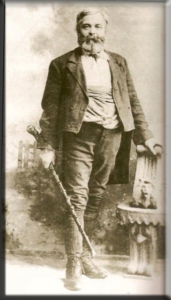
Hurling or “Camans” as it was then known, was played from townland to townland and was particularly strong in the townlands of Rellan, Tattymore and Kilcorn, to the east of the village. The chief organisers were two sets of brothers namely the Cunninghams – Jack and Paddy and the McMeels – Jimmy and Hughie. This game appears to have lapsed in the 1880’s probably coinciding with the end of the careers of the aforementioned. When organised games reappeared the code had switched to football and indeed such was the interest that two teams existed within the parish. Drumshancorick Faughs drew its players from the then densely populated townlands around Tibberadoge whilst Fág a Ballagh’s stalwarts tended to come from nearer the village. The first officials of Fág a Ballagh’s club, who at that time, boasted sixty members, were as follows:- Joe Smyth, Captain, Bernard Mc Caffrey Vice captain, Michael Smith Secretary, and Peter Smyth Treasurer.
The Drumshancorick Faughs, on the other hand had thirty registered members, and their key men were:-
John Lynch Captain, William McMahon Secretary and Harry Devlin Treasurer.
Both clubs had amalgamated by the time a club was registered with the Gaelic Athletic Association in 1888, just four years after that organisation’s foundation. The team was originally named Roslea First Fermanaghs, on the clear assumption that they were the first Fermanagh team registered. Indeed the ‘Peoples Advocate’ newspaper carried the following report –
April 28th 1888
“Roslea First Fermanagh’s Fr Mc Glone presided at a club meeting. The accounts were examined and found to be correct. A letter from the Central Secretary was read stating that Roslea were the first and only affiliated Club in the County. A vote of thanks was proposed by the Chairman of the meeting . He replied in very complimentary terms of the association.”
Michael Smyth, Hon. Sec.
A team from the nearby Wattlebridge area also claimed this distinction and whether this was the reason or not we don’t know but the club reverted to the “Fág a Ballagh” name a short time later. Literally translated this means “leave the road” or “get out of the way”. A flat field close to “The Pleasure House” in the Deerpark was chosen as the first pitch. Use of the field was granted by the Dunne family who were local landlords at the time. One of the first home matches was on Sunday 23rd. September 1888 with Cladone P.O’Briens as the opposition. The final score was Fág a Ballagh 3 goals and 6 points. Cladone No score.
The team played at this venue until 1901 when due to a change of ownership, they were asked to move. The new pitch was at the rear of the village and was the same field to be used again by the club, fifty years later. These lands were owned at the time by a Mr. Cassidy. The club however continued their nomadic existence and moved again in 1904, this time to another field on the Mullinahinch Road. By 1906 the club name had also changed to Roslea Shamrocks, the name they have held ever since save for one year.
The GAA had just gone through a difficult few years at the turn of the century and as yet they had not yet re-organised in County Monaghan and hence the club registered to play in the Fermanagh competitions. They didn’t actually compete that year in their native county however but rather continued to compete in their natural hinder land of County Monaghan throughout the following years and into the teens. In the main this was in Cup competitions or tournaments, which were organised on a rather sporadic basis. Their one notable success was in annexing the “Donnelly Cup”, the spoils for a tournament, which was played between 1907- 1910 among some North Monaghan clubs. This success came in 1908 and such was the delight within the parish at this achievement, that the parish priest Fr Lynch displayed the cup on the altar for several weeks.
Some of the players that featured in this era and into the teens were as follows:-
John Rooney, Barney Brady, Charlie McGuinness, Paddy Connolly, Brian McMahon, Jimmy McKenna, Pat Tully, Eddie McGuinness, Frank Maguire, Tommy McGervey, Larry Mc Guinness, Tommy (Dido)McDonald, Johnny Murphy, Mick Mc Gervey, Atty Mc Guinness, Pat Murphy, Johnny Lynch, Tom Mulligan, Patrick McMahon, George Carberry, Pat Brady, Pat Sonnagh, Joe Lynch, Brian Lynch, Peter McGeough, James Crudden and James Carey.
In the period 1910-1913 the level of G.A.A. activity would have been on the wane generally, no doubt not helped by the level of political activity that was ongoing at the time. In an effort to lift spirits some football was played in specially run tournaments or Sports days over the next couple of years but success in these years continued to be few and far between. Indeed organised football came and went, as times remained difficult..
One competition that the team took part in regularly around this time was the Toal Cup, a trophy donated by Senator Toal, from nearby Smithborough.
By the time the War of Independence broke out in August 1919, things within the Roslea area in general were in a very disjointed state for a number of reasons. There were a number of players “on the run” to avoid arrest, others that had not done so had already been imprisoned and severe restrictions were placed on anyone travelling. Football took a back seat for a few years save for some ‘kick abouts’ on Sunday evenings in the summer.
However by 1923 the club had reformed, and their home had moved once again. This time however they played in the townland of Cordoola, on a field that was to be their home for the next thirty two years. The Cordoola pitch, which was in close proximity to the local primary school, was owned by Pat Connolly, who gave use of his field in return for the hay off the grounds on the parochial house. By 1924, the Shamrocks had re- entered the Monaghan Leagues and they continued to compete on and off, depending on the availability of players, until the latter years of the twenties without success. By the early 1930’s the G.A.A had established a firm footing within Fermanagh, where not only Gaelic football but also hurling and handball was to the fore. Roslea remained one of the few areas of the county that did not have a football team competing in county competitions as they had continued to play in County Monaghan in 1930 and 1931.
By 1932 the club had taken the decision to enter into Fermanagh competitions and thus two representatives from the club, namely Mick Cadden and Larry Flynn, were dispatched to attend the County Board Convention on Sunday March 5th in Lisnaskea. Roslea Shamrocks were duly registered, graded as Junior standard and were entered in the eastern division of a three division League in their inaugural year. The Shamrocks got off to a great start in their new campaign when they won their first match on a score line of Aghalurcher 3-2, Roslea Shamrocks 2-7. The Fermanagh Herald reported:-
“Aghalurcher were at home on Sunday last in the first round of this years Junior league. It was a severe test on the newcomers to League football, Roslea, to be turned out against the League runners –up in 1931 but this did not daunt them as the settled down to work from the commencement and play nice football against good defenders and win out on the day”.
After a number of solid performances, Roslea went on to top their division and when they beat a fancied Irvinestown team on a score line of Roslea 0-5 to Irvinestown 1-1 in the semi-final, they qualified to meet Teemore in the Junior League final. A huge crowd turned out for the game on the 9th October where sterling work by stalwarts Luke Keenan, James Murphy, James Quigley and Hugh Pat Prunty ensured victory for the men from banks of the Finn river.
Final Score: Roslea Shamrocks 2-6 Teemore Shamrocks 1-2.
Roslea Team: – John Clifford, Hugh McGinnity, Teddy McGinnity, Hugh Pat Prunty, Eddie Sweeney, James Quigley, James Murphy, Frankie Slowey, Pat Connolly, Luke Keenan, Johnny McGuinness,
The team subsequently went up to senior for the next few years but always struggled to assert themselves in the higher grade. It was 1937 before anything like success was achieved – they won the eastern section of the Senior League. Disappointment was to be their lot however when they were beaten in the playoffs. By the end of the year the club were suspended for the non appearance of a team to play Wattlebridge and this had such a demoralising effect that they didn’t field at all in 1938. Over the next few years Gaelic games were again finding the going, tough and a border league was formed in 1941 with Roslea competing with teams from Lislea, Killeevan, Clones and Roslea for a set of medals, without success. With trojan work still being done by Seamus Slowey, Mick Cadden and Joe Beagan to keep the club together, 1943 saw an upturn in fortunes.
The Shamrocks were playing in the Junior League again and after a tremendous run of victories they had qualified for the final against Devenish St Marys. You can only imagine the disappointment for the players however when due to the war shortages, no petrol could be found to supply the transport and the team were unable to travel to the match. Indeed as the records show this match was never played.
By 1944, the team had re-entered the Senior League and given that quite a proportion of players were from Aghdrumsee parish (they had not yet formed a team) the club fielded under the name of Dresternan Shamrocks (Dresternan being the townland on the border of the two parishes) – the first and only time the clubs name was changed from 1906 to date.
In 1947, the guiding hand of the newly appointed curate, Fr McWilliams was beginning to show and after some sterling performances the team reached both the Junior League and Championship finals. Lady luck still didn’t shine however and defeat in both by a Holywell team was to be their lot. The score in the league final played on 13th July was 4-2 to 1-7 while the final tally in the Championship was 5-4 to 4-3 on 17th August. 1948 was also to be a defining one in terms of the team as they reached their first ever Senior Championship final against Lisnaskea Emmetts who were very much the kingpins of Fermanagh football at the time. Again things didn’t work out and the team were on the receiving end of heavy defeat.
Things were on an upward trend however and as the 50’s beckoned no one could have envisaged the success that lay ahead. Fr Mc Williams, aided and abetted by Seamus Slowey and John Connolly, kicked off this decade in great style for Roslea Shamrocks when in 1950 his inspiration both divine and otherwise served to guide a young minor team to the clubs first ever county title at this grade. That team was as follows :- Frank Mulligan, Joe Pat Prunty, Johnny Corrigan, Owenie Clerkin, Vinny Boyle, Pat Lynch, Peter Murray, Tommy Callaghan, Tommy Mc Dermott, Kevin Lynch and Vincent McCaffrey and Sean Beggan. Once these lads had tasted success they were hungry for more and in 1951 off they went on a crusade, which ended, after they had defeated Enniskillen Gaels and Belleek in the League and Championship finals, respectively. The injection of this youth to an already experienced Senior team the following year saw the club qualify both the Senior League and Championship finals only to again taste defeat in both at the hands of an Irvinestown team backboned by the Charlton brothers. I953 was a huge anti-climax and when the Aghdrumsee based players intimated that they intended to form their own club for the ’54 season things indeed looked bleak. County Secretary Tom Fee, upon hearing that Roslea could not field a team at the start of the year, convened a meeting in the village where he encouraged everyone to do what the could to keep a proud club in existence. Like the phoenix they rose and gathered together young and old players to form a Junior team. Unbelievable success was achieved as the Junior Double was won against all odds. Spirits were good again as a new field was sought out. A field known as “Tullys Bottom” was identified and after an initial approach to Pat Tully by Tommy Callaghan and the late Owen Clerkin this area was leased for a five year period for the sum of £100-00. The ground was drained mostly by voluntary labour and after a huge club effort and was ready by 1955. The team played here until 1963 when the land was purchased by the parish as the proposed site for the new second level school. A deputation consisting of Jimmy Callaghan and Master Mullarkey subsequently went to the Canon and negotiated the purchase of the playing area, some 3.717 acres for £586 and Roslea Shamrocks became the proud owners of their own pitch for the first time. The team work and bonds established in preparing the pitch in the early years carried on to the field of play and heralded one of the most successful periods on the club’s history. They won the Senior Championship for an incredible four years in row and their players were to play a major part in helping Fermanagh to achieve an All Ireland Junior crown in 1959. Historic victories over Lisnaskea in 1955 (0-9 to 0-4), over Aghdrumsee (0-8 to 0-2) after a replay in 1956, over Derrygonnelly (2-9 to 0-8) in 1957 and over Tempo in 1958 (2-6 to 1-2) are forever etched in the memories of the local gaels. These teams were made up of the Murrays, Hughie, Johnny, Peter, Charlie, Eddie and Anthony . The Mulligans, Tom and Frank. The Callaghans Tommy and Owen. The Clerkins Owenie and Hugh Pat. The O’Rourkes Jim and Des together with other stalwarts such as Joe Pat Prunty Johnny Mohan, Tommy McDermott, Joe Goodwin, Art Brady, Jimmy Creighan, and Thomas Mullarkey. The team featured in a couple of other Senior finals before they again retained the title by defeating Kinawley in 1962. By this time new blood had been introduced in the form of players like Felix Quigley, Paddy and Michael Mullarkey, Malachy O’Rourke, Gabriel Slowey, Packie McCabe, Richard Smyth and Benny Lynch.
The rest of the sixties saw the club ravaged by emigration like so many others and this resulted in there being great difficulty in fielding teams on a regular basis. A yo yo existence between Intermediate and Senior ranks was the order of the day for the next few years before they won a Intermediate football League in 1967. Success wasn’t sustained however and it wasn’t until 1973 when a returning emigrant Benny McDermott breathed new impetus into the club. He not only got strongly involved on the administration side but also managed the Senior team and guided them to an Intermediate double through defeating Derrylin in the Championship final and Enniskillen based Slack and Parr in the league decider. Interesting to note, that this year also saw the club win their first ever U 14 title with a team that featured many of the players who would go on to carve out another very successful era for the club at Senior level, in later years. The mid 70’s were characterised by the extremes of nearly going out of existence again in 1974 to the winning of the Intermediate Championship in !976. Young blood was now once again being introduced and this had a stimulating effect on the clubs fortunes.
The club gained promotion to Division 1 in 1979 after being defeated in the Division 2 final by ‘Skea in 1978. Consolidation was the aim but when Peter McGinnity returned to the club colours after a three year exile with St Johns Belfast ,we were on our way. The Shamrocks were to win the next six Senior Leagues in succession and also added the Senior Championships in 1982, 1984 and 1986 with a team that was as good as has ever been produced by the parish. In 1982 they defeated Carrickcruppen (Armagh), Castleblayney (Monaghan) and Castlewellan (Down) to reach the Ulster Club final where they succumbed to St Galls of Antrim by a margin of three points. 1984, will also go down as a wonderful year in our history, not least because it was the Centenary year of the GAA, but also because the club won every adult title on offer including Senior League and Championship, Junior League and Championship and the GAA Centenary cup.
All in all, the eighties were a marvellous period for our Club not only on the playing filed where we contested almost 20 finals at adult level and achieved numerous successes at underage level but also because it heralded another initiative when a Development Committee was set up within the club to search for a site suitable for major pitch development. Suitable land was identified at the rear of the village and after negotiations by the late Tommy Murray and Tommy Callaghan on behalf of the club, land was purchased from Mrs. Fleming on 25th. July 1983.
Following extensive fund raising activity and planning the contract for the new playing field was awarded to Prunty Contracts in 1985. The ground was officially opened by Peter Quinn President of Comhairle Uladh on Sunday 3rd. July 1988. Rather than resting on their laurels after this momentous day in the history of the club the committee decided to proceed to phase two and the building of Club Room Complex. Roslea Shamrocks had previously secured a house which acted as clubrooms in 1960 at the lower end of Church Street then called Copper Alley. Luke Keenan was one of the leading lights in this venture and many club activities were carried out there until it was demolished in 1969 to make way for Inver Close.
Work commenced on the new Complex in 1990 which was assisted by the A.C.E. workers scheme and the building was completed in 1992. Progress came to a halt for a period as funds were hard to come by but due to the success of the club draw in 1994 it was all hands to the pump again and the complex was duly completed. Shamrock G.A.A. Park Complex was opened in 1996. Roslea won the Comhairle Uladh award for best club set up in the millennium year. The successful Roslea teams of the eighties were like those of the club’s team in the fifties in that they were backboned by a series of brothers. We had the McGeough’s Peter, Sean and Seamus, the McGuinness’s Jim, Francey, Micky Ciaran and Martin, the McGinnity’s Peter and Gerry, the Connolly’s Paddy and Aidan and the other Connollys Mickey and Sean. the Clerkins Damian and Martin, the McDermotts David and Tony together with the two John Joe McNamee’s. Added to the mix you had the likes of Len Carberry, the two John Mohan’s,and Pat, the two Lynch’s Gerry and Paddy, Seamus McMahon, Liam Mulligan, Benny Maguire, Kenny Moffatt, Seamus Callaghan, Ciaran Rooney, Kevin McKenna, Mick Cassidy and Tommy Murray.
By the early nineties our successes were more in the Junior ranks and the Shamrocks won a treble of Junior Championships from 1993 to 1995 and followed this up with another in 1997. Junior leagues were also added in 1994 and 1995 to keep our name to the fore. Trojan work was also being done at underage level at this time by committed men like Packie McCabe, Kevin McKenna, Gerry Lynch and Gerry Mulligan and this too paid rich dividends with a plethora of titles being collected through the decade. At Senior Level we won our first ever Division 2 title in 2002 to gain promotion to Division 1 once again. A keen resolve to make amends in 2002 saw the team back again in the final but this time they emerged victorious against Brookeboro’ and thus returned to the top flight once more.
Consolidation of their Division 1 status was the aim in 2003 and this was duly secured by virtue of a last match win over St Pats, Donagh. The campaigns of 2004, 2005 saw the shamrocks achieve mid table positions but in a very tight league in 2007 their respectable points tally wasn’t enough to keep them in the top flight and they were duly relegated to Division 2 once more. 2008 began with the team aiming to achieve promotion at the first attempt and this they did losing only one game along the way. A solid performance against St Josephs in the League final was enough to annex the Division 2 League title for only the second time. The Junior team won their latest championship in 2007 defeating a fancied Teemore team at the final hurdle. Not to be outdone the youth teams have secured a Minor League, two U16 titles and an U12 championship in recent years. 2009 has begun in the right vein also as our Minors have recently captured the Division 3 Minor League crown to give bright promise to the future of the Shamrocks.
